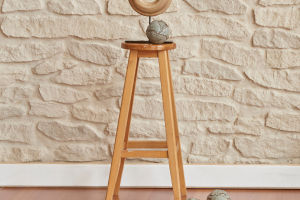Many people use ceramic tableware such as bowls, plates, pots, and spoons daily.
These utensils come in direct contact with our food, making their quality crucial for our overall health. Therefore, when selecting ceramic tableware, it's essential to be extra cautious.
When buying tableware for your home, don't be swayed solely by its decorative appearance. The market is flooded with beautiful-looking products, but their quality may not match their exterior.
To assess the quality, turn the plate over and examine the bottom. High-quality porcelain should have a snowy white and delicate finish on the underside, and it should feel smooth to the touch.
Beware of signs of poor-quality porcelain, such as obvious black spots or incomplete glaze coverage on the bottom. These are clear indicators of ceramic defects, so it's best to avoid purchasing such items.
Another essential step is to use your smartphone flashlight to inspect the plate closely. This time, focus on the evenness and purity of the light-transmitted part.
If you notice prominent black impurities when examining the plate through the light, it's best to refrain from buying it. Superior ceramics will display a uniform and consistent appearance when viewed in this manner.
It's important to note that the translucency of ceramics is not necessarily an indicator of quality. Thinner plates may appear more translucent, but they can compromise strength and thermal insulation.
The thickness of a plate, as well as its material, affects light transmission. Translucency alone is insufficient for distinguishing between good and bad ceramics.
Once you've purchased ceramic tableware, it's essential to clean it properly to ensure safety:
1. Boil the tableware in boiling water for about 5 minutes immediately after purchase. This sterilization step is crucial for maintaining hygiene. Afterward, soak the tableware in room-temperature vinegar for 1-2 hours. Ceramic can release toxic substances when exposed to acidic substances. If you notice a significant color change during soaking, consider discarding the tableware.
2. When cleaning ceramic tableware, use a soft rag or dishcloth. Avoid abrasive scrubbers and stain removal powders that can scratch the surface. Ceramic is susceptible to staining, so it's best to prevent stains from occurring in the first place.
3. Avoid prolonged contact with acidic, oily, or alkaline foods, as these can affect the ceramic's quality over time. Never use oil-containing porcelain tableware in the microwave, as it can lead to the release of toxic substances.
If you need to heat food in porcelain tableware, ensure it lacks any metal decorations, such as gold or silver, to prevent accidents.


